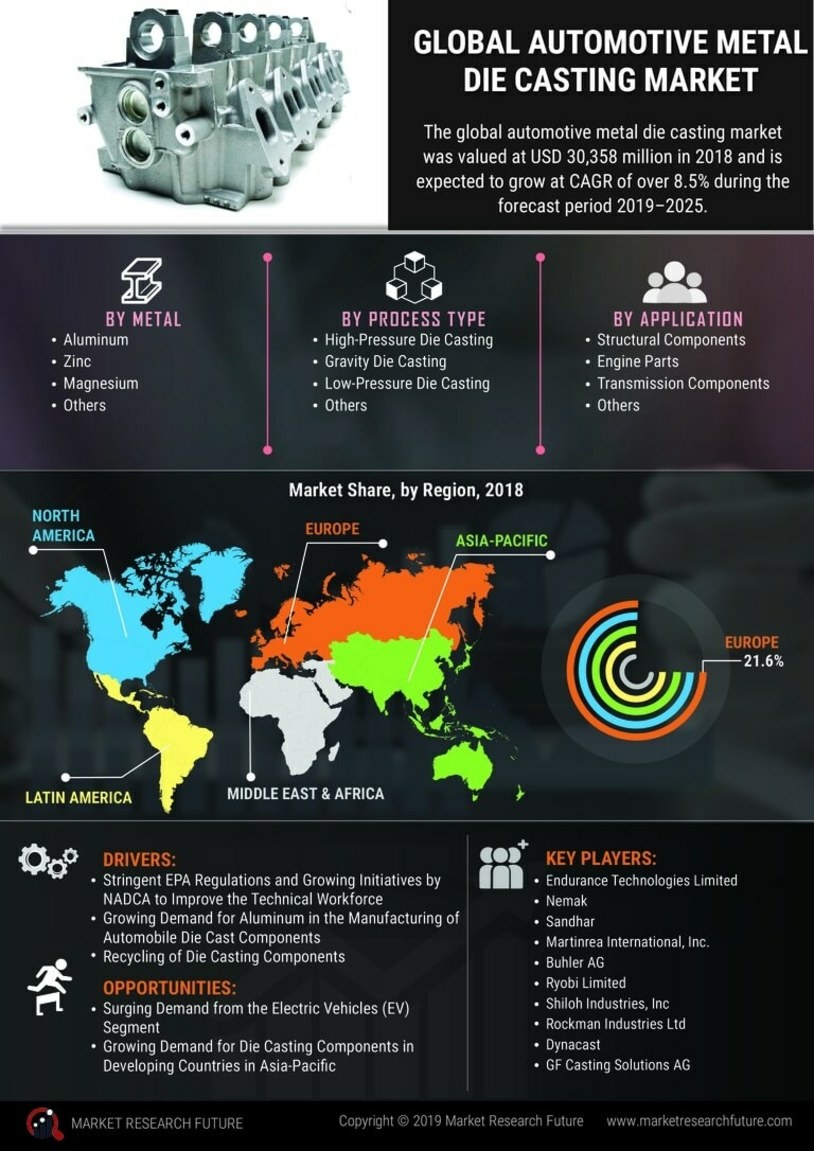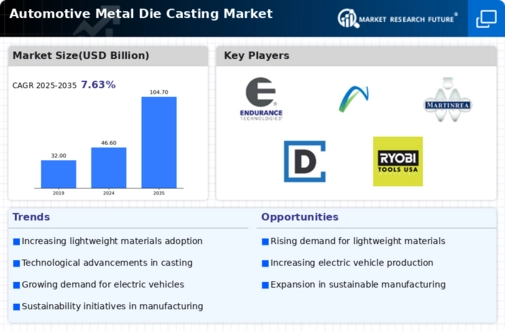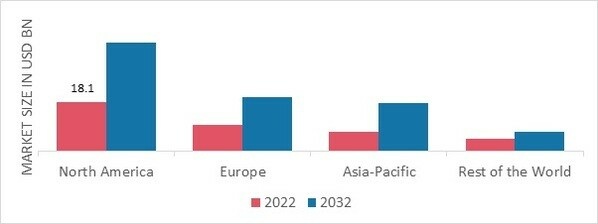Market Growth Projections
The Global Automotive Metal Die Casting Market Industry is projected to experience robust growth, with estimates indicating a market size of 46.6 USD Billion in 2024 and a remarkable increase to 104.7 USD Billion by 2035. This growth trajectory suggests a compound annual growth rate (CAGR) of 7.63% from 2025 to 2035, reflecting the industry's response to evolving automotive trends and consumer demands. The increasing adoption of advanced die casting technologies, coupled with the rising production of electric vehicles and the expansion of automotive manufacturing in emerging markets, underscores the potential for sustained growth in this sector.
Growing Electric Vehicle Production
The Global Automotive Metal Die Casting Market Industry is significantly influenced by the rising production of electric vehicles (EVs). As automakers shift towards electrification, the demand for lightweight and durable components becomes paramount. Die casting processes enable the efficient production of battery housings, structural components, and other essential parts for EVs. This transition not only supports sustainability goals but also aligns with consumer preferences for innovative automotive solutions. The market is poised for substantial growth, with a projected compound annual growth rate (CAGR) of 7.63% from 2025 to 2035, driven by the increasing adoption of electric mobility.
Rising Demand for Lightweight Vehicles
The Global Automotive Metal Die Casting Market Industry experiences a notable surge in demand for lightweight vehicles, driven by stringent fuel efficiency regulations and consumer preference for eco-friendly options. Manufacturers increasingly adopt die casting techniques to produce lightweight components that enhance vehicle performance while reducing emissions. For instance, aluminum die casting is favored for its strength-to-weight ratio, contributing to overall vehicle efficiency. This trend is expected to propel the market, with projections indicating a market size of 46.6 USD Billion in 2024, reflecting the industry's adaptation to evolving consumer and regulatory demands.
Technological Advancements in Die Casting
Technological innovations play a pivotal role in shaping the Global Automotive Metal Die Casting Market Industry. Advanced die casting technologies, such as high-pressure die casting and vacuum die casting, enhance production efficiency and component quality. These advancements allow manufacturers to produce complex geometries with precision, reducing material waste and improving overall productivity. As a result, companies are increasingly investing in state-of-the-art equipment to remain competitive. The anticipated growth of the market, projected to reach 104.7 USD Billion by 2035, underscores the importance of embracing technological progress in meeting the demands of modern automotive manufacturing.
Increased Focus on Sustainability and Recycling
Sustainability initiatives are becoming increasingly central to the Global Automotive Metal Die Casting Market Industry. Manufacturers are prioritizing eco-friendly practices, including the use of recycled materials in die casting processes. This focus on sustainability not only reduces environmental impact but also aligns with consumer expectations for greener products. The automotive industry is actively exploring ways to minimize waste and enhance resource efficiency, which may lead to innovations in die casting techniques. As the market evolves, the integration of sustainable practices is likely to become a key driver of growth, influencing both production methods and consumer choices.
Expansion of Automotive Manufacturing in Emerging Markets
Emerging markets are witnessing a rapid expansion of automotive manufacturing, significantly impacting the Global Automotive Metal Die Casting Market Industry. Countries such as India and Brazil are investing heavily in their automotive sectors, leading to increased demand for die-cast components. This growth is fueled by rising disposable incomes and a burgeoning middle class, which drives vehicle ownership. As manufacturers establish production facilities in these regions, the need for efficient and cost-effective die casting solutions becomes critical. This trend is likely to contribute to the overall market growth, as companies seek to capitalize on new opportunities in these developing economies.







